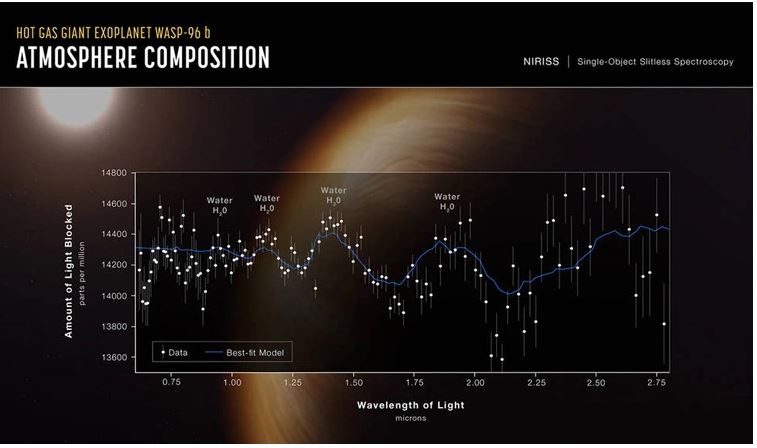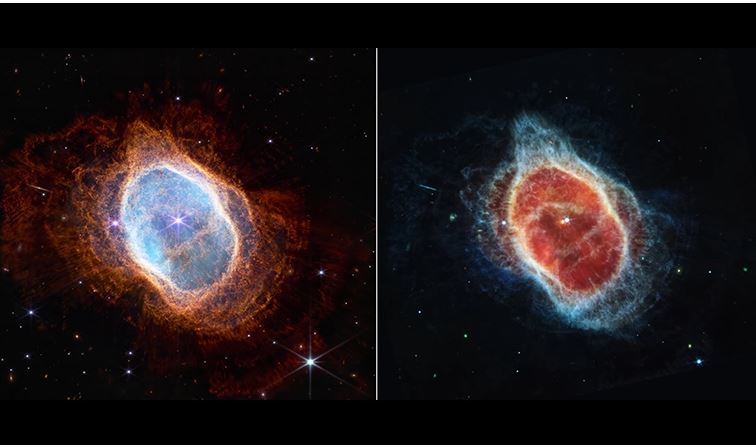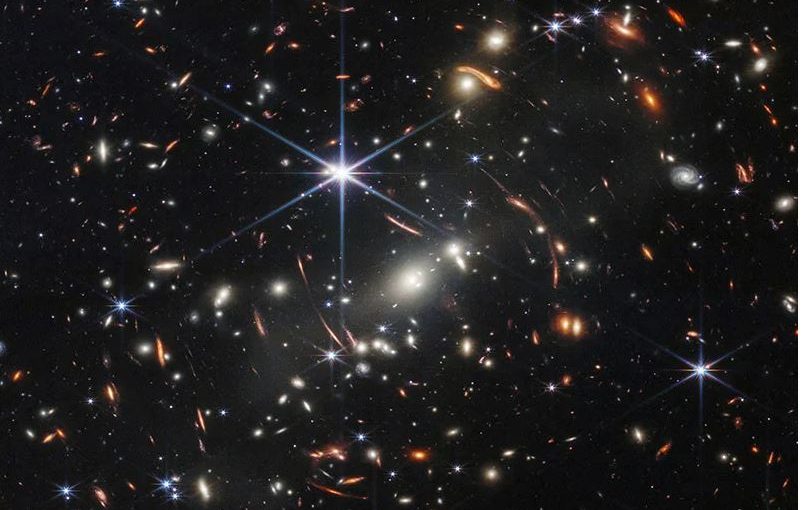NASA announces first image
By: Tech Desk
For the first time the National Aeronautics and Space Administration (NASA) of the United States which has the most powerful James Webb Space Telescope relesed images of the Universe billions of years ago. This images have made public for the first time and give a insight him to the origin of our universe and our planet earth.
The National Aeronautics Space Administration (NASA) revealed three more images taken from the James Webb Space Telescope along with data of a distant planet’s atmosphere. The first image revealed showed the galaxy cluster SMACS 0723 also known as Webb’s First Deep Field. The image is a composite made from different images taken at different wavelengths. It was made using images taken with the Near-Infrared Camera(NIRCam).
NASA then revealed images of the following targets: Carina Nebula, WASP-96 b (spectrum data), Southern Ring Nebula and Stephen’s Quintet. High-resolution versions of the image are now available on NASA’s website. The spectrum data of WASP-96B revealed the presence of water vapour on the distant exoplanet for the first time.
The image of the Southern Ring Nebula captured the “final performance” of a dying star. The image of Stephan’s Quintet shed new light on the evolution of galaxies and black holes with the galaxies in a “galactic dance” or cosmic proportions with each other.
NASA finished the livestream with a stunning high-resolution image of a star-forming region in the Carina Nebula called NGC 3324. The image showed what looks like “mountains” and “valleys” glistening in the sunlight, but were actually features that were 7 light-years high. The hotbed of star formation showed the relationship between dust and gas clouds and blisteringly hot young stars.
NASA announces first image
The first image from the Webb has been shared from NASA’s Goddard Space Centre and is the same deep field image of SMACS 0723 shared earlier. Some of the cosmic objects in the image are pictured as they were 13.1 billion years ago. Webb took 4 days to create the image, compared to the ten days taken by Hubble for a lower-resolution image.The telescope’s NIRCam has brought distant galaxies into sharp focus, letting us see tiny, faint structures that have never been seen before, including star clusters and diffuse features. While viewing the youngest galaxies in the image, we are looking back in time to within a billion years after the big bang.Another special feature is the prominent arcs in the field. The powerful gravitational fields of galaxy clusters bend light rays from distant galaxies behind them, causing an effect known as gravitational lensing. Stars have been captured with prominent diffraction spikes because they appear brighter at shorter wavelengths.
Second image: WASP-96b spectrum

The second image is a spectrum of the gas giant planet WASP-96b, located nearly 1,150 light-years from Earth. This is the first spectrum of an exoplanet taken by Webb. It reveals wavelengths that haven’t been revealed before. The spectrum reveals tell-tale signatures of water vapour on the planet. The planet is closer to its star than Mercury is to our sun.
This is the most detailed near-infrared transmission spectrum of an exoplanet atmosphere captured to date. It also covers an exceptionally wide range of wavelengths including visible red light and a portion of the spectrum that has not previously been accessible from other telescopes.
This part of the wavelength spectrum is very sensitive to water as well as key life molecules like oxygen, methane and carbon dioxide. These are not immediately obvious in the WASP-96b spectrum and could potentially be detected in future observations of other exoplanets made by Webb
Third image: Final performance of a dying star

The third image is a near-infrared image of the Southern Ring Nebula or the “Eight-burst Nebula,” a planetary Nebula surrounding a dying star.
The stars at the centre are prominent in the image. from Webb’s NIRCam on the left while the image from Webb’s MIRI on the right shows for the first time that the second dimmer star is surrounded by dust. The brighter star is younger and will probably project its own planetary nebula in the future.
As the pair orbits each other, they “stir the pot” of gas and dust, causing asymmetrical patterns. Each shell of gas in the image represents the time when the fainter star lost some of its mass. The widest shells of gas toward the outer areas of the image were ejected earlier. The ones closest to the star are the most recent. Scientists can look into the history of the system by tracing these ejections
Fourth image: Shedding light into galaxy evolutions and black holes

The fourth image is an enormous mosaic of Stephan’s Quintet and the largest image taken by Webb to date. It covers over 150 million pixels and is constructed from 1,000 separate image files. The image shows the dramatic impact of huge shockwaves as one of the galaxies smashes through the cluster. It also shows a black hole in the Quintet at a detail never seen before.
Even though they are called a quintet, only four of the galaxies are actually close together and caught in a “cosmic dance”. The leftmost galaxy is well in the foreground in comparison with the other four. It is about 40 million light-years away from the earth while the other four are about 290 million light-years away. But even that distance is fairly close in cosmic terms.
Studying such ‘nearby’ galaxies like these helps scientists better understand the dynamics in a more distant universe. Such tightly-packed groups might have been more common in the early period of the universe when their superheated material may have fueled highly energetic black holes called quasars. Even as we see the quintet today, the topmost galaxy harbours an active supermassive black hole 24 million times the mass of the Sun.
Fifth image: Cosmic cliffs and the blistering birthplace of stars

The last and final image released by NASA shows a star-forming region in the Carina Nebula called NGC 3324, and its “mountains” and “valleys” speckled with glittering stars. Captured in infrared for the first time by Webb, the new image shows previously invisible areas of star birth.
The image resembles craggy mountains on a moonlit evening. Actually, it is the edge of the giant gaseous cavity within the region of the nebula and some of the tallest “peaks” in the nebula are around 7 light-years high. The cavernous area in the image was carved from the nebula by the intense ultraviolet radiation and stellar winds from extremely hot young stars located in the centre of this “bubble,” above the area shown in the image.
This young star’s intense ultraviolet radiation is slowly eroding it away. Some pillars tower about the glowing wall of gas, resisting the star’s radiation. What looks like steam rising from the “mountains” is actually hot ionised gas and hot dust streaming away from the nebula because of radiation.
